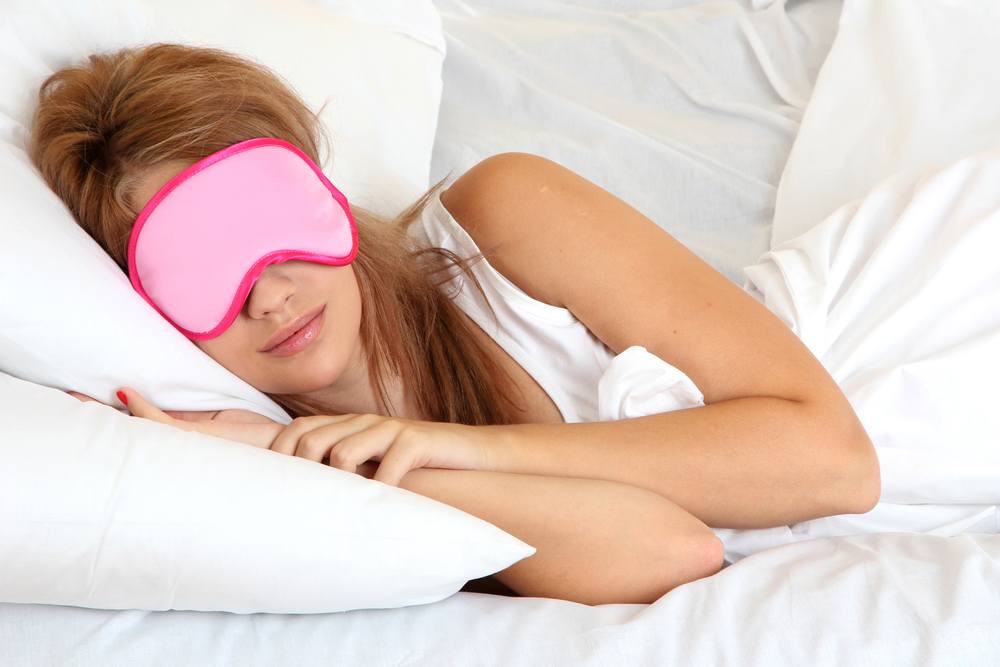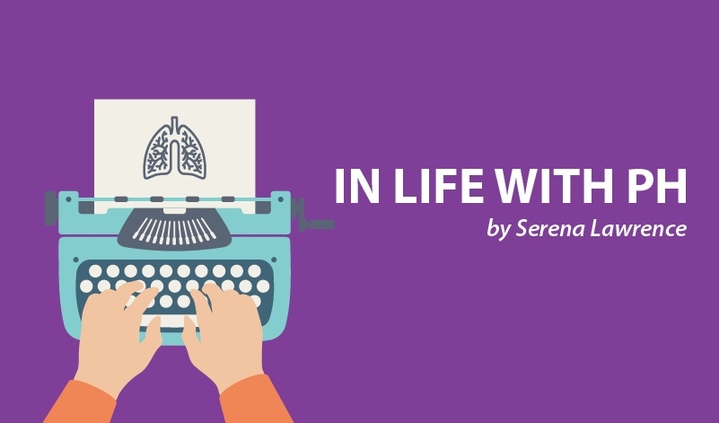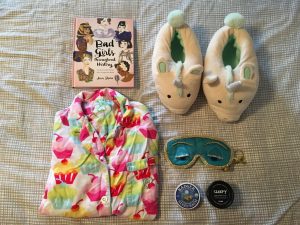Six Tips for Getting a Better Night’s Sleep

Sleep is one of our body’s most vital functions. Living with pulmonary hypertension makes sleep that much more important, and sometimes more difficult. I always have struggled with insomnia, and it only became worse after being diagnosed with pulmonary hypertension. I’ve had many nights tossing, turning and worrying. As soon as I try to hit the hay it is as if the little hamster in my brain hits the panic button.
Here are six steps to add to your nightly sleep routine that should help you let go of the day’s worries and sink into a better night’s sleep.
1. Unplug Before Bed
Do you check your e-mails or read a few pages from an e-reader before bed? I admit it is difficult for me to put my phone down, but the light emitted from a cell phone screen or tablet can cause harm to your sleep cycle. The blue light emitted from these devices is much higher than the concentration found in natural light. Blue light interferes with our sleep cycle because it suppresses the production levels of melatonin, the hormone needed to help induce sleep. As such, checking your phone before bed can make it more difficult for you to fall asleep, stay asleep, and even reach REM levels of sleep, which is essential for a good nights sleep.
Can’t put down your phone before bed? Many digital devices have an option where you can dim the brightness of the screen, or even filter some of the blue light that is omitted during the evening. These options may help, but your best bet is to unplug at least 30 minutes to an hour before hitting the hay.
2. Sleep with an Eye Mask
I know that sleep masks aren’t for everyone, but I swear by them. They are so essential to my sleep routine that I always pack one when I travel. (I also have several different sleep masks because, as a wise Canadian poet named Drake once said, “YOLO.”) Plus, anyone who knows me knows I (a) need different masks to match different pajamas (b) refuse to use anything if it isn’t cute and functional. In addition to making you look hella cute, sleep masks also can help promote sleep. They can help block light, which can help send signals to your body that it’s time for some sweet, sweet sleep. I find that sleep masks also are helpful in the same way blinders are for a horse. Wearing a sleep mask helps calm my racing thoughts and anxiety before bed.
3. The Importance of Pajamas
Beth Ricanati, MD, wrote about the importance of pajamas and their role in health and happiness. The argument is that feeling good on the outside can have an impact on how you feel inside. Wearing something that is both comfortable, and that you feel good wearing, can boost your confidence and also make you more inclined to take care of yourself.
Treat yourself to a pair of pajamas that you feel excited to wear, and are comfortable enough to help you get a good night’s rest. As someone who has pulmonary hypertension and works from home, I think it is important to note the need to change into pajamas before bed. I try to avoid sleeping in my sweat pants and working in my pajamas. Of course, there are days where I am too drained to change in and out of lounge clothes or pajamas. However, most of the time I try to make a conscious effort to wear different clothes during the day than what I sleep in. I feel more motivated to do things if I change out of my pajamas.
4. Soothing Scents
Calming scents can help us feel relaxed enough to get a good night’s sleep. Lavender has a variety of therapeutic benefits, and is most commonly associated with relaxation and sleep. Studies show that lavender can aid in the reduction of anxiety and insomnia. This comforting scent also can help promote deep sleep because it increases slow-wave sleep.
I use Badger Balm’s Sleep Balm, which is made out of essential oils, but comes in a wax form instead of an oil. I prefer it to essential oils because it isn’t messy and it is very easy to use. I rub a little on my temples before hitting the hay. I also use some of Lush’s Sleepy body lotion and rub it on my body and hands before sleep. The scent is soothing, and it certainly helps with dry winter skin.
You may want to ask your doctor before using essential oils to ensure there are no interactions. Some vapor rubs, for example, can be dangerous with the use of supplementary oxygen. It also is important to use products that work well for you. You may want to avoid scents entirely if they bother your breathing.
5. Read Before Bed
Having a reading ritual before bed can actually help prepare your body for sleep. Reading before bed can help release the stresses of the day. Reading a few pages before bed can help you fall asleep faster, and help you enjoy better quality sleep. Lately I’ve been reading Bad Girls Throughout History: 100 Remarkable Women Who Changed the World by Ann Shen. This book is perfect for me to read before bed because it has the most charming illustrations, the short biographies about each woman is the perfect amount for me to read before bed, and it leaves me feeling inspired.
6. Meditating for Sleep
Meditating before sleep is a new habit. Guided meditations from apps and CDs have been helping me let go of all the accumulated stress I have collected from the day. I am not the only one who has been getting a better night’s sleep thanks to meditation. Various studies have shown that practicing meditation and other mindfulness exercises can help us improve our sleep. Meditation can help us sleep better by triggering the relaxation response. Incorporating a meditation into your nightly bed routine sleep may help you unwind, and there are some guided meditations for sleep that are as short as 3-5 minutes long. I’ve been enjoying the guided meditations that help encourage sleep from apps like Breathe and Buddhify.
Note: Pulmonary Hypertension News is strictly a news and information website about the disease. It does not provide medical advice, diagnosis, or treatment. This content is not intended to be a substitute for professional medical advice, diagnosis, or treatment. Always seek the advice of your physician or other qualified health provider with any questions you may have regarding a medical condition. Never disregard professional medical advice or delay in seeking it because of something you have read on this website. The opinions expressed in this column are not those of Pulmonary Hypertension News or its parent company, Bionews Services, and are intended to spark discussion about issues pertaining to pulmonary hypertension.










Leave a comment
Fill in the required fields to post. Your email address will not be published.